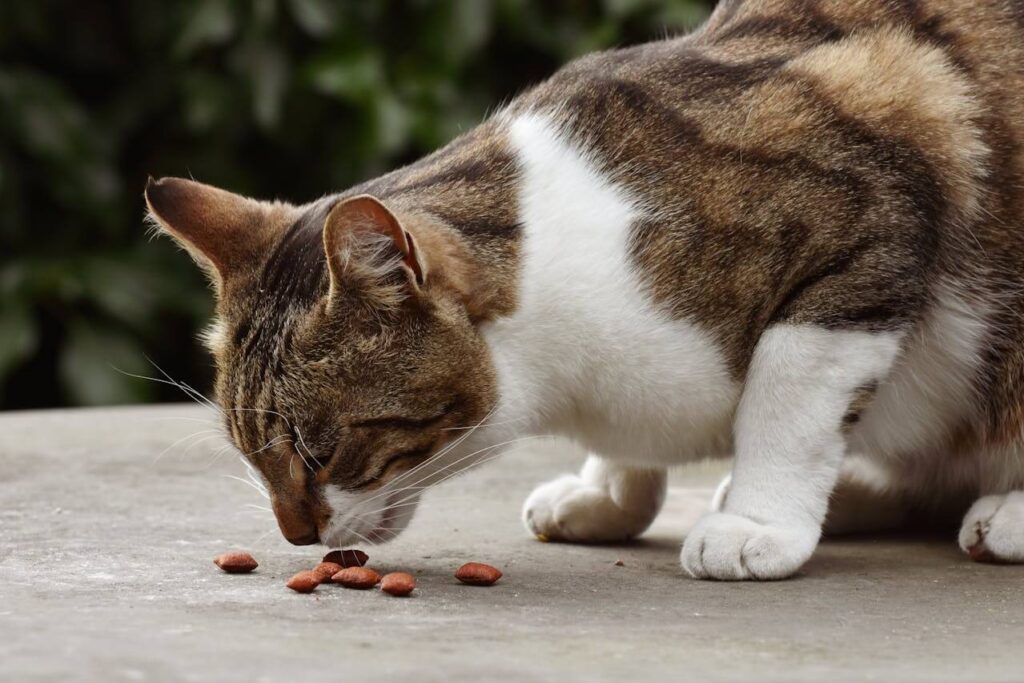Introduction
There’s nothing like the soft purr of your cat as they rub against your leg, content after a satisfying meal. As a pet parent, feeding your cat isn’t just about filling their bowl—it’s about nourishing their body, boosting their energy, and keeping those whiskers twitching with health. But with endless food options—dry, wet, raw, grain-free—how do you craft a diet plan that keeps your feline friend thriving? A healthy diet is the cornerstone of a long, happy life for your cat, and it’s easier than you think to get it right.
Crafting a balanced cat diet plan ensures your cat stays at their best, from a glossy coat to a playful spirit. This guide, designed for pet parents like you, explores why a tailored diet matters, how to create a nutrition plan for your cat’s unique needs, and practical tips to make mealtime a joy. With heartfelt stories, expert insights, and parent-tested product recommendations, you’ll be inspired to build a diet that keeps your cat purring with vitality.
Why a Healthy Cat Diet Matters
Cats are obligate carnivores, meaning they need meat-based diets rich in protein and specific nutrients like taurine. Poor nutrition can lead to obesity, urinary issues, or dull coats, while a balanced diet supports their health and longevity. A 2024 study in Feline Medicine and Surgery found that cats on tailored, high-quality diets have fewer health issues and higher energy levels, making them happier companions.
Take Lisa, a pet parent from Miami with a tabby named Oliver. “Oliver was lethargic and his coat was dull,” she shared. “I thought all cat food was the same, but switching to a vet-recommended wet food made him a new cat—playful and shiny. It’s been a game-changer.” Lisa’s story shows how the right diet can transform your cat’s well-being.
Benefits of a Healthy Diet Plan
- Optimal Health: Proper nutrition prevents obesity, diabetes, and urinary tract issues.
- Energy and Playfulness: A balanced diet fuels your cat’s natural curiosity and zest.
- Longevity: High-quality food supports a longer, healthier life for your feline friend.
Understanding Your Cat’s Nutritional Needs
Every cat is unique—kittens need growth-supporting calories, adults require maintenance diets, and seniors benefit from joint-friendly foods. Factors like weight, activity level, and health conditions (e.g., allergies or kidney issues) shape their needs. Observing your cat’s habits and consulting your vet are key to crafting a personalized plan.
Case Study: Mochi’s Mealtime Makeover
Mike, a pet parent from Seattle, noticed his kitten Mochi was gaining weight too fast. “She was a chubby fluffball, but I worried about her health,” he said. Mike worked with his vet to create a diet plan with portion-controlled wet food and a slow feeder. “Mochi’s slimmed down and zooms around now. I feel like a better cat dad.” Mochi’s transformation proves the power of a tailored diet.
Why It Works
- Personalized Nutrition: A diet matched to your cat’s needs ensures optimal health.
- Preventive Care: Proper feeding reduces risks of chronic conditions, saving vet bills.
- Happier Cat: A well-fed cat is more playful, strengthening your bond.
How to Create a Healthy Cat Diet Plan
Building a diet plan is about balancing quality, variety, and practicality. Here’s a step-by-step guide to get started:
1. Choose High-Quality Cat Food
Select foods with meat as the first ingredient, avoiding fillers like corn or artificial additives. Wet food hydrates and suits carnivore needs, while dry food supports dental health. The Purina Pro Plan Wet Cat Food is vet-recommended, with high protein and flavors cats love. My friend’s cat thrives on it. Check it out here—it’s a nutrition powerhouse.
2. Balance Wet and Dry Food
Combine wet food for hydration and dry food for convenience. The Hill’s Science Diet Dry Cat Food is formulated for adult cats, with balanced nutrients. See it here—it’s a staple for healthy cats. Aim for 70% wet and 30% dry, per ASPCA guidelines, adjusting based on your cat’s needs.
3. Control Portions and Feeding Times
Overfeeding leads to obesity, so measure portions using a scoop like the OXO Good Grips Pet Food Scoop. It’s precise and easy to use, a go-to for my sister’s cat. Take a look here—it prevents overfeeding. Feed adults twice daily, kittens 3–4 times, following package guidelines.
4. Use Feeding Tools for Enrichment
Slow feeders or puzzle bowls make mealtime engaging, preventing gulping. The Catit Senses Food Maze is a fun, interactive feeder that keeps cats entertained. Check it out here—it’s a mental workout for your cat.
5. Add Hydration Support
Cats often drink too little, risking urinary issues. A water fountain encourages hydration. The PetSafe Drinkwell Ceramic Pagoda Fountain is stylish and easy to clean, a favorite for my neighbor’s cat. See it here—it’s a health booster.
Practical Tips for Implementing a Diet Plan
- Consult Your Vet: Get a baseline health check to tailor the diet, especially for seniors or cats with conditions.
- Transition Gradually: Mix new food with old over 7–10 days to avoid stomach upset.
- Monitor Weight: Use a pet scale like Greater Goods Digital Pet Scale to track changes. Take a peek here—it’s accurate and easy.
- Keep Bowls Clean: Wash with a pet-safe cleaner like Nature’s Miracle Dish Soap. Check it out here—it keeps mealtime hygienic.
Case Study: Luna’s Health Glow
Rachel, a pet parent from Phoenix, worried about her senior cat Luna’s low energy. “She was picky and losing weight,” she said. Rachel switched to a senior-specific wet food and added a fountain, monitoring portions with a scoop. “Luna’s coat is glossy now, and she’s playful again. I’m so relieved.” The Royal Canin Aging 12+ Wet Cat Food was her choice. Check it out here—it’s a senior senior cat’s delight.
Tips for Long-Term Diet Success
- Regular Check-ins: Weigh your cat monthly and adjust portions as needed, per Catster advice.
- Rotate Flavors: Offer variety within the same brand to prevent boredom, e.g., chicken or salmon Purina.
- Store Food Safely: Use an airtight container like IRIS Airtight Pet Food Storage. See it here—it keeps kibble fresh.
- Watch for Allergies: Monitor for signs like itching and consult a vet if issues arise.
Overcoming Common Diet Challenges
- Challenge 1: Picky Eaters: Try warming wet food or adding a topper like Tiki Cat Savory Broth. Check it out here—it’s a flavor enhancer.
- Challenge 2: Overeating: Use slow feeders and measure portions to prevent obesity.
- Challenge 3: Hydration Issues: Add fountains or wet food to boost water intake.
Why Invest in a Healthy Cat Diet?
A healthy cat diet is a investment in your cat’s vitality, from a sleek coat to a playful spirit. It prevents costly health issues, keeps your home joyful, and deepens your bond with every satisfied purr. With the right plan, you’ll see your cat thrive.
Conclusion: Nourish Your Cat’s Life
Your cat deserves a diet that fuels their curiosity and health, making every day a whisker-worthy adventure. By crafting a balanced plan with quality food, tools, and care, you’re giving them a foundation for joy. You’re not just a pet parent—you’re a nurturer of purrs and vitality. So, fill that bowl, pick the best cat diet products, and watch your cat shine.
Join the ParentMosaic community to share your cat diet success stories and tips. Let’s create a mosaic of healthy felines, one purr at a time.



